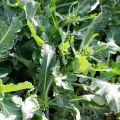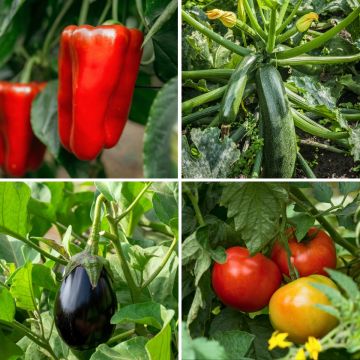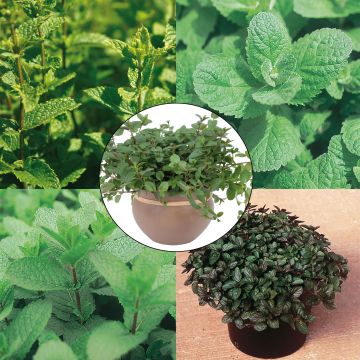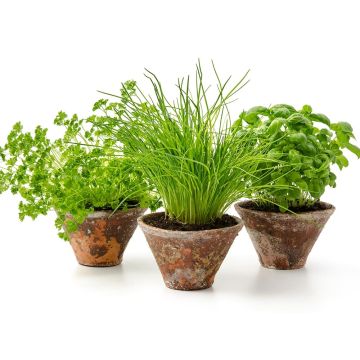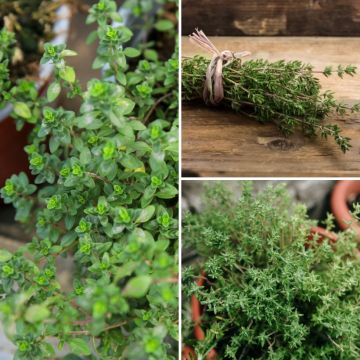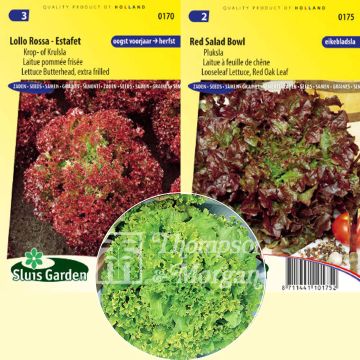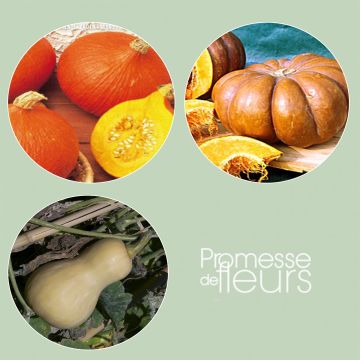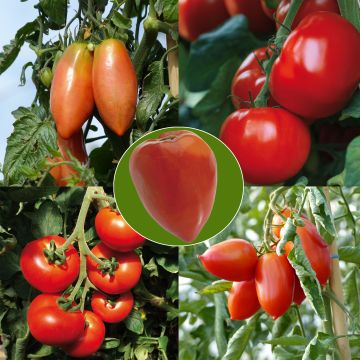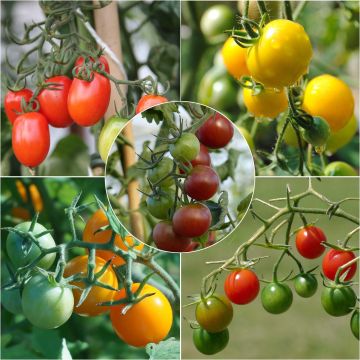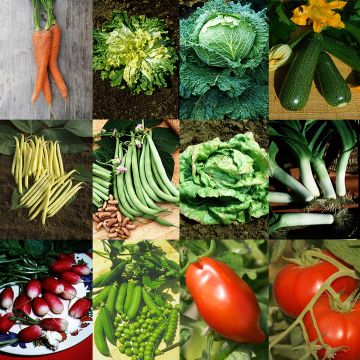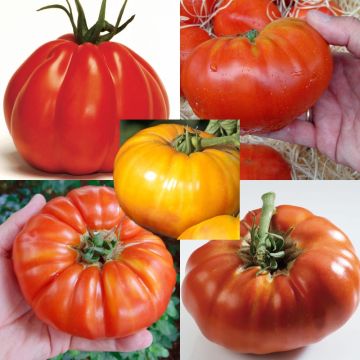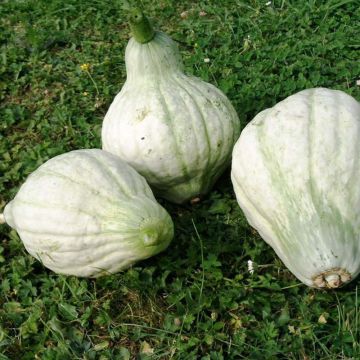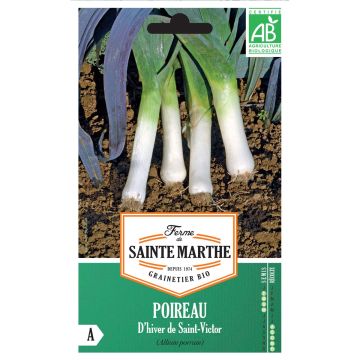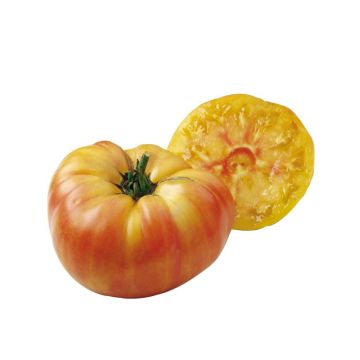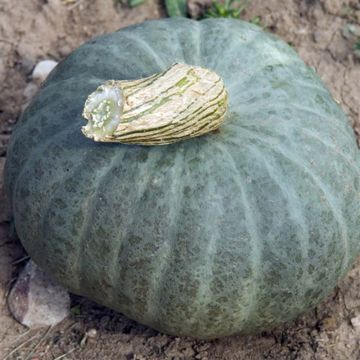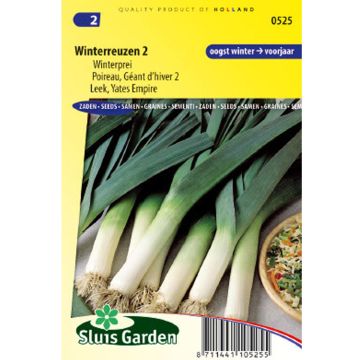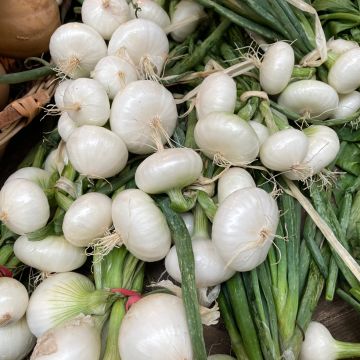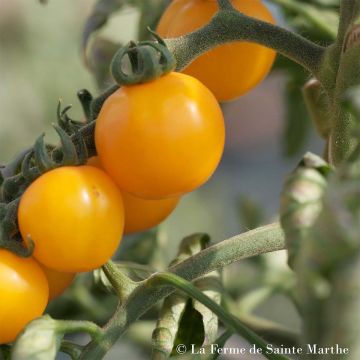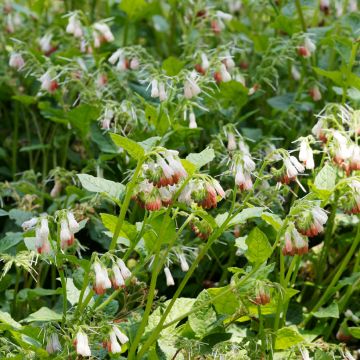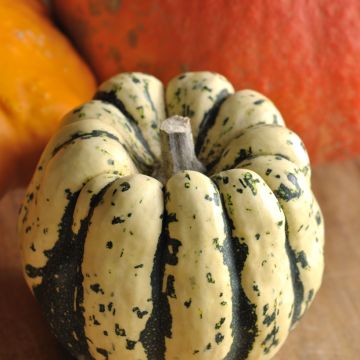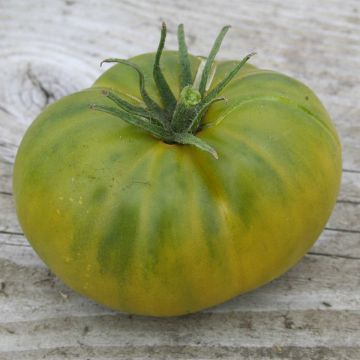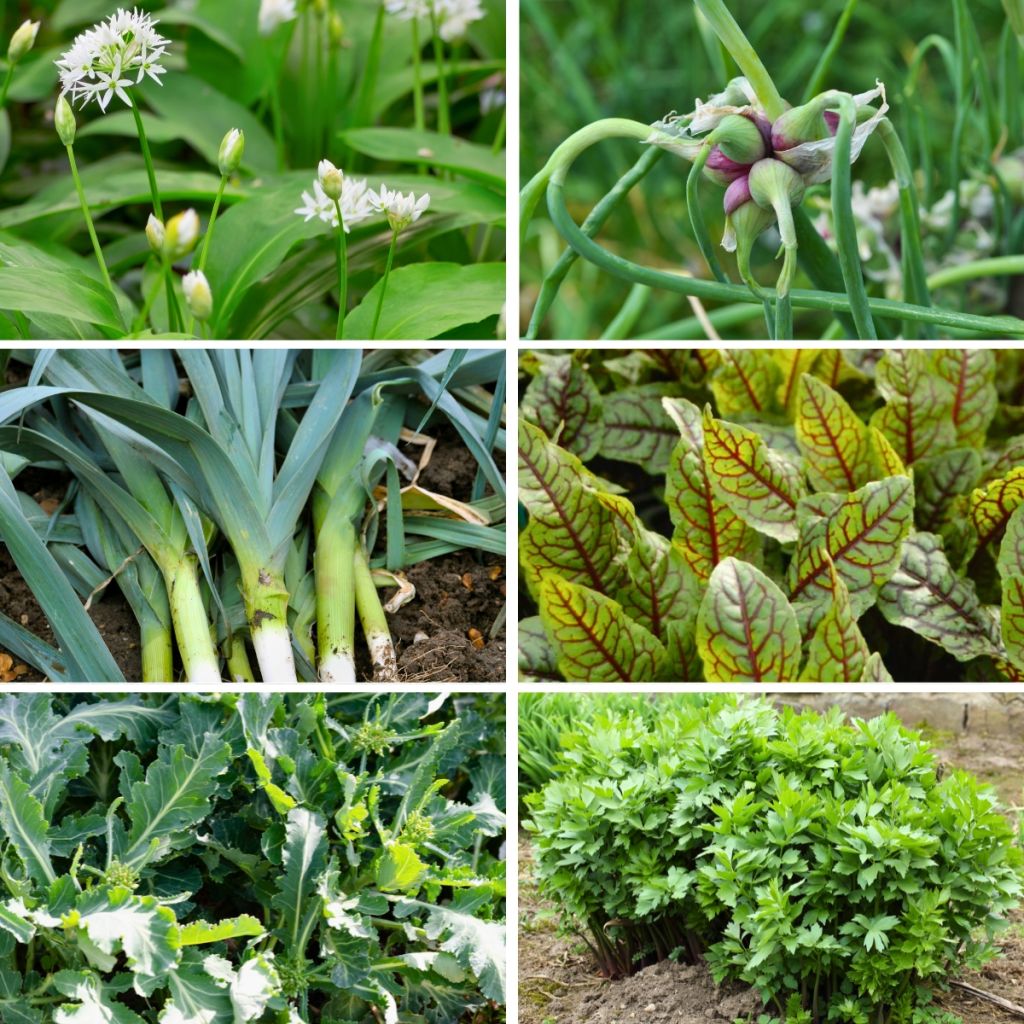

Perennial Vegetable Collection
Perennial Vegetable Collection
This plant carries a 6 months recovery warranty
More information
We guarantee the quality of our plants for a full growing cycle, and will replace at our expense any plant that fails to recover under normal climatic and planting conditions.
From €5.90 for pickup delivery and €6.90 for home delivery
Express home delivery from €8.90.
Collection items (6 plants)
Description
We offer you this "6 Perennial Vegetables" collection, carefully selected for permaculture. These perennial plants are sturdy and resistant, making them a perfect fit for an ecological garden, and they offer a great taste. Adapted to various types of soil, they withstand cold weather well, require little maintenance, and provide a continuous and sustainable harvest year after year.
The collection includes:
1 Organic Vine Leek (Allium ampeloprasum): A perennial plant that grows 30 to 50 cm tall, with light green foliage and white flowers. Can be harvested all year round. Leaves and stems are used in cooking for soups, quiches, and gratins.
1 Daubenton Perennial Cabbage (Brassica oleracea): A shrubby perennial plant that grows 80 to 100 cm tall, with dark green non-heading foliage. Leaves can be harvested all year round. Perfect for soups, stir-fries, and stews.
1 Wild Garlic (Allium ursinum): A perennial plant that grows 20 to 30 cm tall, with wide dark green foliage and white flowers in spring. Edible leaves with a garlic flavour, harvested from March to June. Ideal for pestos, salads, and garlic-based dishes.
1 Bloody Sorrel (Rumex sanguineus): A perennial plant that grows 30 to 60 cm tall, with green leaves veined with red and summer flowering. Leaves can be harvested from April to October. Tangy taste, perfect for salads, sauces, and soups.
1 Lovage (Levisticum officinale): A perennial plant that grows 1 to 2 m tall, with shiny green foliage and small yellow flowers in summer. Leaves can be harvested from May to October. Used as a condiment to flavour soups, broths, and stews.
1 Walking Onion (Allium cepa proliferum): A perennial plant that grows 50 to 80 cm tall, with white flowers in umbels. Forms edible aerial bulblets, harvested from July to October. Used raw or cooked in salads, stews, and marinades.
Plant these perennial vegetables in spring or autumn, in well-worked, well-drained, and fertile soil. Soil rich in organic matter will promote their growth. Water regularly, but not excessively, ensuring that the soil remains slightly moist without being waterlogged. Fertilise with well-rotted compost or organic fertiliser in early spring to support growth.
Planting in the vegetable garden and permaculture: Prepare the planting areas by adding compost and lightly working the soil. Place the tallest plants, such as Lovage and Daubenton Perennial Cabbage, at the back of the bed to prevent shading of other plants. Place the Vine Leek and Walking Onion in the middle, and the Wild Garlic and Bloody Sorrel at the front. Maintain a spacing of 30 to 40 cm between each plant to ensure good air circulation and prevent diseases.
Combine these perennial vegetables with other vegetable plants or small fruits to create a productive garden. Also, discover our themed vegetable garden "winter reserves". Add edible flowers such as nasturtiums and marigolds, they will add a touch of colour while attracting beneficial insects. Also, consider creating a border of strawberries near your perennial vegetables.
Report an error about the product description
Harvest
Plant habit
Foliage
Other Collections
Planting and care
Plant these perennial vegetables in spring or autumn, in well-worked, well-drained, and fertile soil. A soil rich in organic matter will promote their growth. Water regularly, but not excessively, ensuring that the soil remains slightly moist without being waterlogged. Fertilise with well-rotted compost or organic fertiliser in early spring to support growth. Prepare the planting areas by adding compost and lightly working the soil. Place the tallest plants at the back to prevent them from shading the others. Maintain a spacing of 30 to 40 cm between each young plant to ensure good air circulation and prevent diseases. Use mulch between the vegetable ranks to save on watering and limit the growth of "weeds".
Cultivation
Care
Intended location
This item has not been reviewed yet - be the first to leave a review about it.
Old and forgotten vegetables
Haven't found what you were looking for?
Hardiness is the lowest winter temperature a plant can endure without suffering serious damage or even dying. However, hardiness is affected by location (a sheltered area, such as a patio), protection (winter cover) and soil type (hardiness is improved by well-drained soil).

Photo Sharing Terms & Conditions
In order to encourage gardeners to interact and share their experiences, Promesse de fleurs offers various media enabling content to be uploaded onto its Site - in particular via the ‘Photo sharing’ module.
The User agrees to refrain from:
- Posting any content that is illegal, prejudicial, insulting, racist, inciteful to hatred, revisionist, contrary to public decency, that infringes on privacy or on the privacy rights of third parties, in particular the publicity rights of persons and goods, intellectual property rights, or the right to privacy.
- Submitting content on behalf of a third party;
- Impersonate the identity of a third party and/or publish any personal information about a third party;
In general, the User undertakes to refrain from any unethical behaviour.
All Content (in particular text, comments, files, images, photos, videos, creative works, etc.), which may be subject to property or intellectual property rights, image or other private rights, shall remain the property of the User, subject to the limited rights granted by the terms of the licence granted by Promesse de fleurs as stated below. Users are at liberty to publish or not to publish such Content on the Site, notably via the ‘Photo Sharing’ facility, and accept that this Content shall be made public and freely accessible, notably on the Internet.
Users further acknowledge, undertake to have ,and guarantee that they hold all necessary rights and permissions to publish such material on the Site, in particular with regard to the legislation in force pertaining to any privacy, property, intellectual property, image, or contractual rights, or rights of any other nature. By publishing such Content on the Site, Users acknowledge accepting full liability as publishers of the Content within the meaning of the law, and grant Promesse de fleurs, free of charge, an inclusive, worldwide licence for the said Content for the entire duration of its publication, including all reproduction, representation, up/downloading, displaying, performing, transmission, and storage rights.
Users also grant permission for their name to be linked to the Content and accept that this link may not always be made available.
By engaging in posting material, Users consent to their Content becoming automatically accessible on the Internet, in particular on other sites and/or blogs and/or web pages of the Promesse de fleurs site, including in particular social pages and the Promesse de fleurs catalogue.
Users may secure the removal of entrusted content free of charge by issuing a simple request via our contact form.
The flowering period indicated on our website applies to countries and regions located in USDA zone 8 (France, the United Kingdom, Ireland, the Netherlands, etc.)
It will vary according to where you live:
- In zones 9 to 10 (Italy, Spain, Greece, etc.), flowering will occur about 2 to 4 weeks earlier.
- In zones 6 to 7 (Germany, Poland, Slovenia, and lower mountainous regions), flowering will be delayed by 2 to 3 weeks.
- In zone 5 (Central Europe, Scandinavia), blooming will be delayed by 3 to 5 weeks.
In temperate climates, pruning of spring-flowering shrubs (forsythia, spireas, etc.) should be done just after flowering.
Pruning of summer-flowering shrubs (Indian Lilac, Perovskia, etc.) can be done in winter or spring.
In cold regions as well as with frost-sensitive plants, avoid pruning too early when severe frosts may still occur.
The planting period indicated on our website applies to countries and regions located in USDA zone 8 (France, United Kingdom, Ireland, Netherlands).
It will vary according to where you live:
- In Mediterranean zones (Marseille, Madrid, Milan, etc.), autumn and winter are the best planting periods.
- In continental zones (Strasbourg, Munich, Vienna, etc.), delay planting by 2 to 3 weeks in spring and bring it forward by 2 to 4 weeks in autumn.
- In mountainous regions (the Alps, Pyrenees, Carpathians, etc.), it is best to plant in late spring (May-June) or late summer (August-September).
The harvesting period indicated on our website applies to countries and regions in USDA zone 8 (France, England, Ireland, the Netherlands).
In colder areas (Scandinavia, Poland, Austria...) fruit and vegetable harvests are likely to be delayed by 3-4 weeks.
In warmer areas (Italy, Spain, Greece, etc.), harvesting will probably take place earlier, depending on weather conditions.
The sowing periods indicated on our website apply to countries and regions within USDA Zone 8 (France, UK, Ireland, Netherlands).
In colder areas (Scandinavia, Poland, Austria...), delay any outdoor sowing by 3-4 weeks, or sow under glass.
In warmer climes (Italy, Spain, Greece, etc.), bring outdoor sowing forward by a few weeks.


































